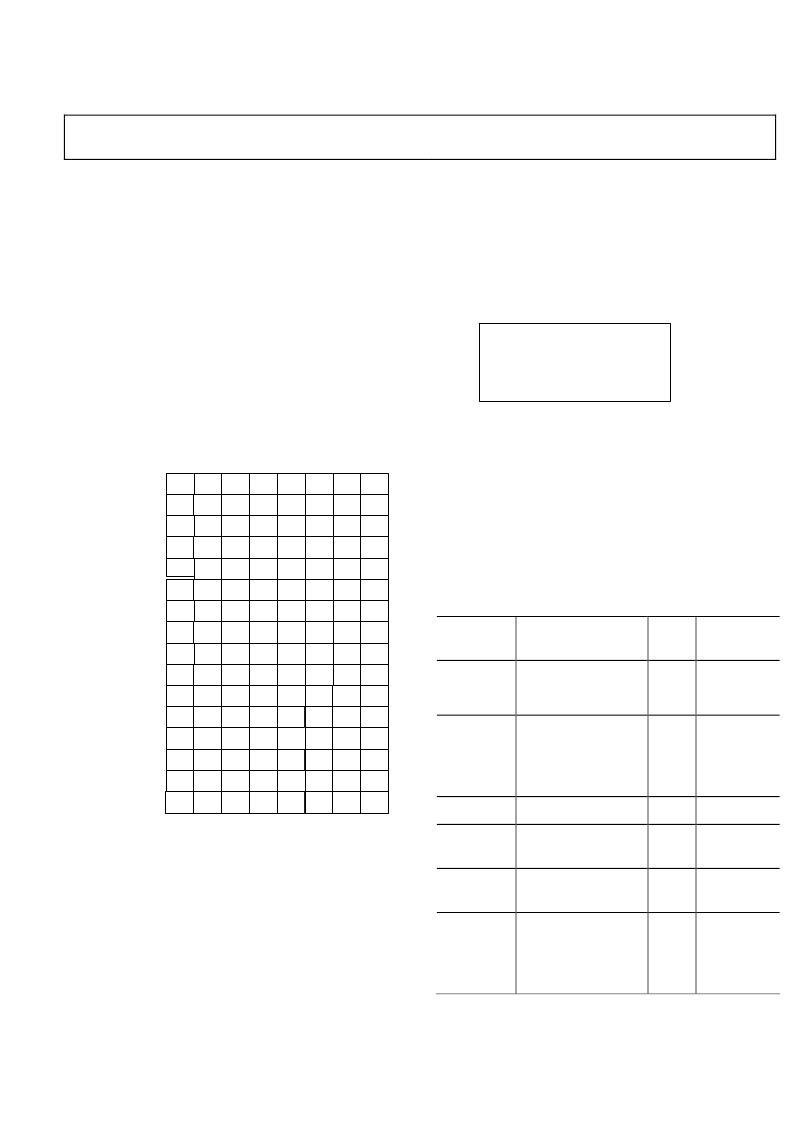- 您現(xiàn)在的位置:買賣IC網(wǎng) > PDF目錄373980 > ADE7169ASTZF16-RL (ANALOG DEVICES INC) Single-Phase Energy Measurement IC with 8052 MCU, RTC and LCD driver PDF資料下載
參數(shù)資料
| 型號: | ADE7169ASTZF16-RL |
| 廠商: | ANALOG DEVICES INC |
| 元件分類: | 模擬信號調(diào)理 |
| 英文描述: | Single-Phase Energy Measurement IC with 8052 MCU, RTC and LCD driver |
| 中文描述: | SPECIALTY ANALOG CIRCUIT, QCC64 |
| 封裝: | 9 X 9 MM, ROHS COMPLIANT, MO-22-VMMD-4, LFCSP-64 |
| 文件頁數(shù): | 75/140頁 |
| 文件大小: | 1359K |
| 代理商: | ADE7169ASTZF16-RL |
第1頁第2頁第3頁第4頁第5頁第6頁第7頁第8頁第9頁第10頁第11頁第12頁第13頁第14頁第15頁第16頁第17頁第18頁第19頁第20頁第21頁第22頁第23頁第24頁第25頁第26頁第27頁第28頁第29頁第30頁第31頁第32頁第33頁第34頁第35頁第36頁第37頁第38頁第39頁第40頁第41頁第42頁第43頁第44頁第45頁第46頁第47頁第48頁第49頁第50頁第51頁第52頁第53頁第54頁第55頁第56頁第57頁第58頁第59頁第60頁第61頁第62頁第63頁第64頁第65頁第66頁第67頁第68頁第69頁第70頁第71頁第72頁第73頁第74頁當(dāng)前第75頁第76頁第77頁第78頁第79頁第80頁第81頁第82頁第83頁第84頁第85頁第86頁第87頁第88頁第89頁第90頁第91頁第92頁第93頁第94頁第95頁第96頁第97頁第98頁第99頁第100頁第101頁第102頁第103頁第104頁第105頁第106頁第107頁第108頁第109頁第110頁第111頁第112頁第113頁第114頁第115頁第116頁第117頁第118頁第119頁第120頁第121頁第122頁第123頁第124頁第125頁第126頁第127頁第128頁第129頁第130頁第131頁第132頁第133頁第134頁第135頁第136頁第137頁第138頁第139頁第140頁

Preliminary Technical Data
ADE7169F16
Both direct and indirect addressing can be used to access
General Purpose RAM from 0x00 through 0x7F but indirect
addressing must be used to access General Purpose RAM with
addresses in the range from 0x80 through 0xFF because they
share the same address space with the Special Function
Registers (SFRs).
Rev. PrD | Page 75 of 140
The 8052 core also has the means to access individual bits of
certain addresses in the General Purpose RAM and Special
Function Memory spaces. The individual bits of General
Purpose RAM addresses 0x20 through 0x2F can be accessed
through their bit addresses 0x00 through 0x7F. The benefit of
bit addressing is that the individual bits can be accessed quickly,
without the need for bit masking, which takes more code
memory and execution time. The bit addresses for General
Purpose RAM addresses 0x20 through 0x2F can be seen in
Figure 58.
0x20 07 06 05 04 03 02 01 00
0F 0E 0D 0C 0B 0A 09 08
17 16 15 14 13 12 11 10
1F 1E 1D 1C 1B 1A 19 18
27 26 25 24 23 22 21 20
2F 2E 2D 2C 2B 2A 29 28
37 36 35 34 33 32 31 30
3F 3E 3D 3C 3B 3A 39 38
47 46 45 44 43 42 41 40
4F 4E 4D 4C 4B 4A 49 48
57 56 55 54 53 52 51 50
5F 5E 5D 5C 5B 5A 59 58
67 66 65 64 63 62 61 60
6F 6E 6D 6C 6B 6A 69 68
77 76 75 74 73 72 71 70
7F 7E 7D 7C 7B 7A 79 78
0x21
0x22
0x23
0x24
0x25
0x26
0x27
0x28
0x29
0x2A
0x2B
0x2C
0x2D
0x2E
0x2F
Byte Address
Bit Addresses (hexa)
Figure 58: Bit Addressable Area of General Purpose RAM
Bit addressing can be used for instructions that involve Boolean
variable manipulation and program branching—see the
Instruction set.
Special Function Registers:
Special Function Registers are
registers that affect the function of the 8051 core or its
peripherals. These registers are located in RAM with addresses
0x80 through 0xFF. They are only accessible through direct
addressing as shown in Figure 57 .
The individual bits of some of the SFRs can be accessed for use
in Boolean and program branching instructions. These SFRs are
labeled as bit-addressable and the bit addresses are given in the
SFR Mapping.
Extended Internal RAM (XRAM):
The ADE7169F16 provides
256 bytes of extended on-chip RAM. No external RAM is
supported. This RAM is located in addresses 0x0000 through
0x00FF in the Extended RAM space. To select the Extended
RAM memory space, the extended indirect addressing modes
are used. The internal XRAM is enabled in the Configuration
SFR (CFG, 0xAF) by writing 01 to CFG[1:0].
256 BYTES OF
EXTENDED INTERNAL
RAM (XRAM)
00h
FFh
Figure 59: Extended Internal RAM (XRAM) Space
Code Memory:
Code and data memory are stored in the
16kbyte Flash memory space. No external code memory is
supported. To access Code memory, Code Indirect addressing is
used.
ADDRESSING MODES
The 8052 core provides several addressing modes. The
addressing mode determines how the core will interpret the
memory location or data value specified in assembly language
code. There are six addressing modes as shown in Table 59:
Table 59. 8052 Addressing Modes
Addressing
Mode
Example
Bytes
Core Clock
Cycles
Immediate
MOV A, #A8h
MOV DPTR,#A8h
2
3
2
3
Direct
MOV A, A8h
MOV A, IE
MOV A, R0
2
2
1
2
2
1
Indirect
MOV A,@R0
1
2
Extended
Direct
MOVX A, @DPTR
1
4
Extended
Indirect
MOVX A, @R0
1
4
Code
Indirect
MOVC A, @A+DPTR
MOVC A, @A+PC
JMP @A+DPTR
1
1
1
4
4
3
Immediate Addressing:
In Immediate Addressing, the
expression entered after the number sign (#) will be evaluated
by the assembler and stored in the memory address specified.
相關(guān)PDF資料 |
PDF描述 |
|---|---|
| ADE7169F16 | Single-Phase Energy Measurement IC with 8052 MCU, RTC and LCD driver |
| ADE7751 | Energy Metering IC with On-Chip Fault Detection |
| ADE7751AAN-REF | Energy Metering IC with On-Chip Fault Detection |
| ADE7751AN | Energy Metering IC with On-Chip Fault Detection |
| ADE7751ARS | Energy Metering IC with On-Chip Fault Detection |
相關(guān)代理商/技術(shù)參數(shù) |
參數(shù)描述 |
|---|---|
| ADE7169F16 | 制造商:AD 制造商全稱:Analog Devices 功能描述:Single-Phase Energy Measurement IC with 8052 MCU, RTC and LCD driver |
| ADE75 | 制造商:AD 制造商全稱:Analog Devices 功能描述:Single-Phase Energy Measurement IC with 8052 MCU, RTC and LCD driver |
| ADE7518ASTZF16 | 功能描述:IC ENERGY METER MCU 16K 64LQFP RoHS:是 類別:集成電路 (IC) >> PMIC - 能量測量 系列:- 產(chǎn)品培訓(xùn)模塊:Lead (SnPb) Finish for COTS Obsolescence Mitigation Program 標(biāo)準(zhǔn)包裝:2,500 系列:* |
| ADE7518ASTZF16-RL | 功能描述:IC ENERGY METER MCU 16K 64LQFP RoHS:是 類別:集成電路 (IC) >> PMIC - 能量測量 系列:- 產(chǎn)品培訓(xùn)模塊:Lead (SnPb) Finish for COTS Obsolescence Mitigation Program 標(biāo)準(zhǔn)包裝:2,500 系列:* |
| ADE7518ASTZF8 | 功能描述:IC ENERGY METER MCU 8K 64LQFP RoHS:是 類別:集成電路 (IC) >> PMIC - 能量測量 系列:- 產(chǎn)品培訓(xùn)模塊:Lead (SnPb) Finish for COTS Obsolescence Mitigation Program 標(biāo)準(zhǔn)包裝:2,500 系列:* |
發(fā)布緊急采購,3分鐘左右您將得到回復(fù)。